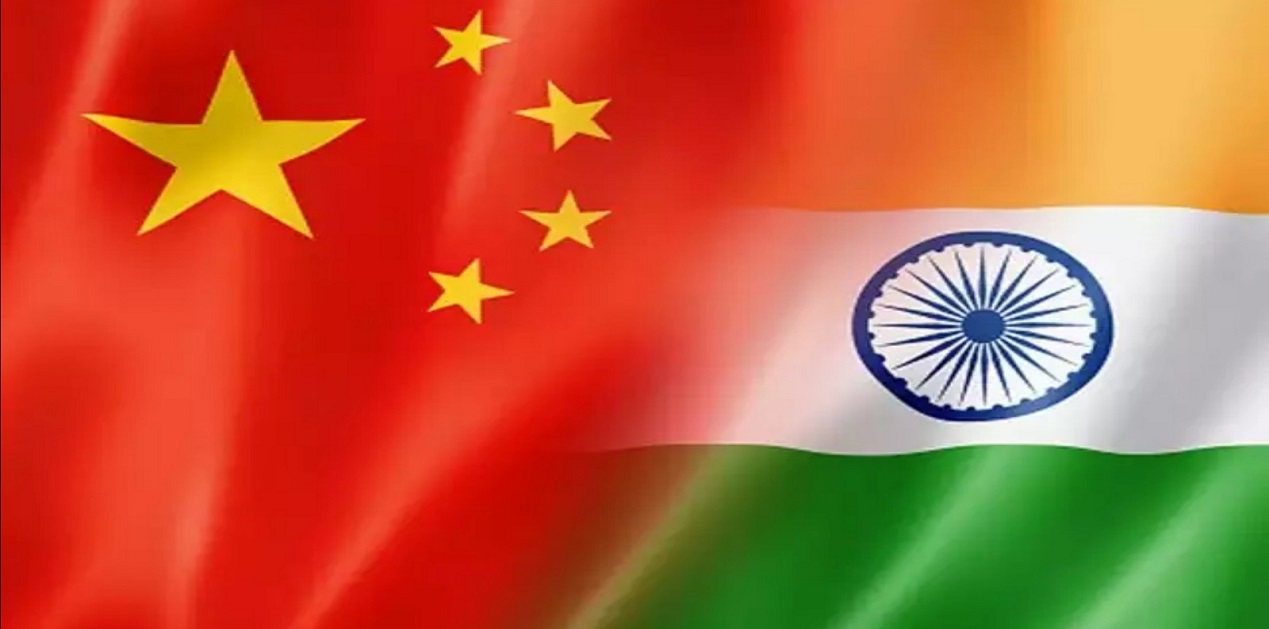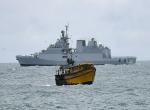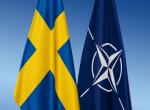Far from any signs of an end to the military stand-off between India and China, or that tensions between the two will ease, China’s mood towards India is hardening. There are indications that China sees the current confrontation as the beginning of a period of sustained, protracted pressure on India. The military confrontation in the Himalayas is likely to escalate, with a high possibility of clashes occurring periodically commencing from Spring this year. These could include sharp, swift military actions.
China has meanwhile stepped up domestic publicity campaign, though yet limited, of its narrative on the military stand-off in Ladakh. Predictably, China’s official media describes China’s actions in Ladakh as a counter-offensive provoked by India’s aggressive “forward policy” and as infringing on Chinese sovereignty. China’s official media anticipates that further military build-up, accompanied by the possibility of clashes, will commence as conditions ease in April-May.
Important are two recent articles by Hu Shisheng, Director of the Institute for South Asian Studies at the China Institutes of Contemporary International Relations (CICIR). He is probably the Institute’s leading expert on South Asian affairs, especially India and Pakistan. The CICIR is one of China’s most influential institutes and is directly under the Ministry of State Security (MoSS), China’s external intelligence establishment. Most recently Yuan Peng, President of CICIR and an Americas expert, addressed the 26th ‘study session’ of the CCP CC Politburo on December 12, to offer suggestions on how China should engage with the United States.
Hu Shisheng co-authored a 33-page article titled ‘The Behavioural Logic behind India’s Tough Foreign Policy toward China’, in the latest (Sept-Oct) issue of Contemporary International Relations (CIR), the CICIR’s official publication. In it Hu Shisheng was categoric that the “conflict was not incidental”, but the “inevitable” result of the “high risk, high yield” policy followed by the Modi administration. He attributed this policy to “a desire to seek revenge” prompted by “India’s long-term pursuit of absolute security and dominance in the regional order” and the Modi government’s ambition to “overtake China by taking advantages of India’s favourable external strategic environment”.
The CIR article was published in Chinese as well as English. The intention is obviously to ensure wider publicity for China’s views of its relations with India and the problems in the relationship.
India's international environment, Hu Shisheng said, has generally improved since Prime Minister Modi came to power. He assessed that “India's geo-value” has risen to its highest since independence because of the demands of the US and the West to contain China, particularly in the context of intensifying China-US confrontation. This has given the Modi administration “more courage and confidence to be tough on China”.
Hu Shisheng projected a pessimistic view for China-India relations explaining that “Indian conservatives already held deep strategic mistrust and apprehension about China due to the structural problems existing between the two countries”. He described the RSS as a conservative, right-wing, hardline political organisation opposed to foreign investment. Pointing out that important leaders in the government and the majority of those in the BJP came from an RSS background, he stated that India’s political orientation was steadily shifting to the right. He gauged the RSS’ increasing influence from the number of ‘shakhas’ which had grown from about 40,000 when Modi first came to power in 2014, to 84,000 in 2019. He assessed that the rise of conservative forces had shrunk the space of the liberal groups -- traditionally made up of diplomatic and business elites --- and “even done away with the strategic culture of swinging between the sides of China and the US”. He said that Modi had, additionally, tried to downplay popular opposition by being increasingly tough on China and building his image as a leader tough on security issues. Hu Shisheng emphasised that “staying in power is the most important political strategy for a leader in a democracy”.
Discussing the confrontation on the border, Hu Shisheng asserted “it was India that provoked the conflict by launching a surprise attack on the Chinese-controlled area in the middle of the night, seriously wounding Chinese border guards, while China took a posterior action to fight back inflicting great casualties on Indian border troops”. He said “the Modi administration has become increasingly tougher in its policy toward China hence building up antagonism between the two countries and putting China-India relations on a downward trend”. He stated that this “first major large-scale border conflict with widespread casualties since1975 indicates that the development of China-India relations has come to a structural bottleneck, and the time has arrived for the two countriesto restructure their relations, otherwise their relationship can hardly be resumed”. He added that since Modi came to power, China-India relations have every year “witnessed a benign beginning and a sad ending”.
Hu Shisheng assessed that India had provoked the border conflict at the Galwan Valley because “China's border infrastructure building activities in that region were thought to pose serious threats to the Darbuk-Shyok River-Daulat Beg Oldie highway, which is an important strategic route for India to ensure effective control of the Siachen Glacier, which is not only the strategic high grounds to monitor the China-Pakistan Karakoram highway, but also the world's highest battlefield where Indian and Pakistani military troops confront eachother”.
Describing the conflict at the Galwan Valley as “anything but the end”, Hu Shisheng said the contest over the border is highly likely to move from "reconciliation through dialogues" to a new stage featuring "contention for control with real power". This will inevitably give rise to border standoffs and clashes. With the Indian government authorising its border troops to tackle border incidents, he felt the probability of conflict escalating from “cold weapons to firearms” is likely to increase. Hu Shisheng anticipated that in course of time “the bottom line of tolerance will become a red line lying between the border troops of both countries”.
In other words, the two sides will continue to advance their control in the frontier areas to their respective perception of the border. While there is a hint that both would try to avoid full-scale conflict, there is acceptance that occasional firefights could well occur. This could, he assessed, eventually lead to a mutually accepted border, or defined line of actual control.
Stating that “Today, the Indian military has basically controlled most of the commanding heights along the eastern and middle section of the China-India border”, he shifted the blame on India saying “Since Modi came into power, India's border troops have focused on promoting the Forward Policy along the western section of the China-India border”. The incidence of border confrontations has consequently increased in the western section. “In 2019 for example, India trespassed China's line of actual control 1,581 times, of which 94 percent occurred in the western section of the China-India border”. When China responded strongly, border confrontations and even clashes occurred. This, he said, is why “China and India have always been caught in yearly vicious cycles of "starting high and ending low" since Modi assumed power in 2014”.
Moving to broader issues that be-devil bilateral relations, he candidly assessed that India and China “were doomed to have a serious collision of interests or even military conflict from the very beginning of their independence and since establishing frontier and regional order”. He asserted this was inevitable “As one newly-born state is a denier of the colonial order, while the other one is its successor”. He clarified this as China resenting humiliation by foreign colonial powers while India, on the contrary, had accepted colonial rule and felt it had benefitted from this. Explaining that India perceives itself as a “successor” to the colonial power and continues to pursue its policies, he said because of this “Tibet-related issues and border disputes between China and India continued to intensify and even today, from time to time, these two problems still threaten the stability of China-India relations”. He pointed to the conflict at the Galwan Valley as the latest example.
Touching on the broader aspects of the relationship, Hu Shisheng asserted that more complicated than border issues are the contention for influence and dominance and “order in the region involving relations among China, India and their neighbours”. As the respective national strengths of India and China grow, “the two major regional powers would have an increasing overlap of interests in the same area”.
In this context he claimed that “Unfortunately, the Monroeist policy currently pursued by the BJP has collided with the advance of China's Belt and Road Initiative”. With an increasing number of India's neighbours actively participating in the Belt and Road Initiative, competition between the two has intensified to involve regional order in South Asia and the northern Indian Ocean. He described India's tendency to “overreact with respect to China's South Asian policy” as the most significant external factor that triggers domestic political unrest in India's neighbouring countries. As examples he listed the blocking of Nepal's border (from September 2015 to January 2016), “dividing the pro-China regime in Sri Lanka (from December 2014 to January 2015)”, “strongly curtailing the pro-China tendencies in Bhutan's internal politics by intervening in its national elections (in 2013 and 2018)”, and “toppling the pro-China government in Maldives” (2019).
Hu Shisheng encapsulated that “Sino-Indian relations have been disturbed deeply by five "T" issues, referring to the Tibet issue, territory disputes, the third-party factor, trade unbalance and trust deficit”. He said “different issues have different impacts on their bilateral relations at different times”.
In conclusion, Hu Shisheng said that since both countries face issues like food shortages and are determined not to be vassals of major powers, they need “to design a stable and far-reaching path for the future development” of relations. Pointedly avoiding any mention of close and friendly ties, he suggested that “both countries have to build a relationship resembling two cars driving in parallel lanes, each sticking to their own respective lanes” to avoid accidents. If this is done, he felt the China-India relationship will be smooth for the next 70 years.
Another article by Hu Shisheng, this time published in the Global Times (December 17), suggested a more negative and obstructive view of India. Publication of this article in a CCP-owned publication will have required high level approval.
The article stated that India’s multi-lateral diplomacy has become “more pro-west and Sinophobic” and that India had abandoned a balanced approach. Hu Shisheng said India is less interested in multilateral mechanisms where China plays a leading role, elaborating that “India tends to disrupt China's agenda in multilateral mechanisms” to prevent them from boosting China's rise. He criticised India for not promoting internal unity in the BRICS and SCO, but trying to dismantle them from within. He attributed India’s withdrawal from the Regional Comprehensive Economic Partnership (RCEP) to India being unable to play a dominant role there.
He said India wants to be the leader of the developing world. However, as the gap between India and China widened differences between them grew on matters such as regional and global governance and “the favourable atmosphere for China-India cooperation” gradually faded.
The Indian Ocean was identified as another area where India wants to be the net security provider, but since it cannot do this alone because of the BRI it is trying to align with the US Indo-Pacific strategic framework. Stating that Indian political elites tend to stand with the US and the West to launch an ideological offensive against China, Hu Shisheng said they emphasise their connections with American and Western value systems. In India's view, China is its top geopolitical competitor and China-India cooperation on development and international issues cannot change this fact. Hu Shisheng said in conclusion that India is no longer interested in small-scale multilateral mechanisms where China plays an important role and is instead more interested in promoting multilateral mechanism with the US and the West.
Another article by an anonymous author, but posted on a PLA-maintained website on December 24, claimed the Indian Army is “waiting for an opportunity to cause trouble next year” and “the conflict may be worse than this year”. It claimed that China and India “have prepared for a long-term confrontation in the disputed border area”. Reiterating that China does “not want to be an enemy of India, but this does not mean that China will compromise on sovereignty issues”, it added “China will at best cool down but will not withdraw”. It claimed that because of the “Indian Party’s strong Hindu nationalist ideology” and elite strategic thinking, along with the United States aim to control China, “the confrontation is expected to continue for several years”.
It anticipated that military confrontation will resume as conditions improve in April and the Indian Army again becomes active before May. “The goal of the Indian army is not to launch a full-scale war, but to try to control a part of the strategically important hills through infiltration and sneak attacks while preparing for a full-scale war to optimize its confrontation”. The article added “it is very likely that the two sides will further expand the scale of the battle” which will make the situation more difficult to control by mid next year.
The article recommended that the People's Liberation Army (PLA) should move more mechanized units into the area by the beginning of Spring season “to deter and respond to the cannibalization of the Indian army in order to maintain a stable situation”. It averred that “Military deterrence is always more important than negotiation” and said the PLA “has better organization, better training, higher morale, and better equipment” than the Indian Army. Asserting that China “can also conduct joint operations with Pakistan on a larger scale”, it said despite the Indian army’s claims it is unable to fight on two fronts.
In conclusion, it said “India has chosen to confront China, then we must also be prepared. It is just that in this long-term game, India must be the one that pays the greater price. India will waste decades on the misjudgement of Modi and Jaishankar’s strategy”.
The publication of these articles gives an insight into China’s view of its longer term relationship with India. Publication of Hu Shisheng’s candid and detailed assessment in CICIR’s official magazine is important and will reflect the view, at the least, of China’s Intelligence establishment. It also implicitly confirms Beijing ambitions.
(The paper is the author’s individual scholastic articulation. The author certifies that the article/paper is original in content, unpublished and it has not been submitted for publication/web upload elsewhere, and that the facts and figures quoted are duly referenced, as needed, and are believed to be correct). (The paper does not necessarily represent the organisational stance... More >>
Image Source: https://www.aninews.in/news/national/general-news/breakthrough-in-sight-in-india-china-military-stand-off-on-lac-india-moving-ahead-cautiously20201108164741/











Post new comment